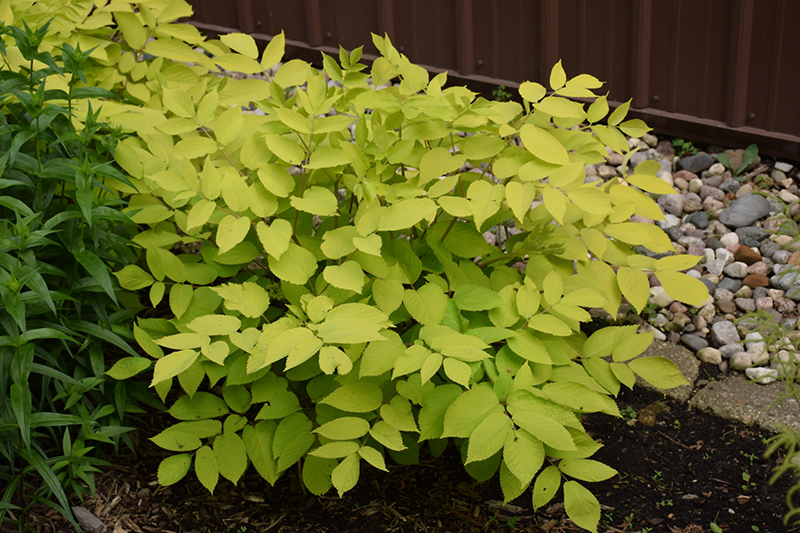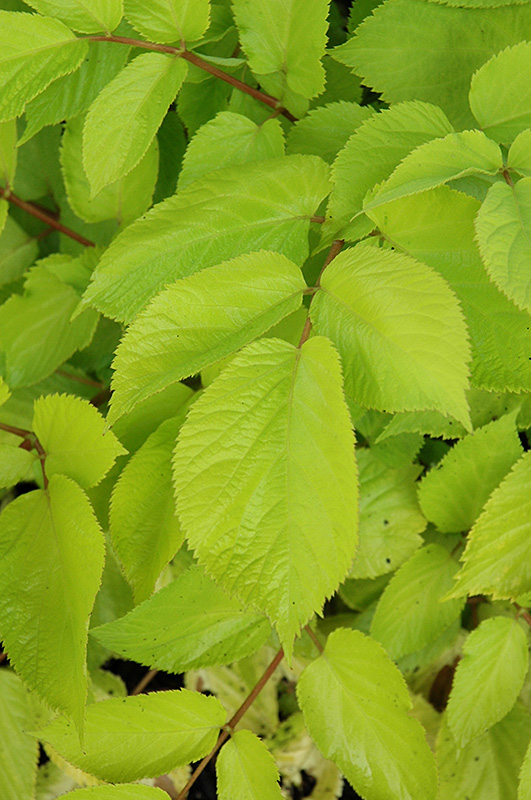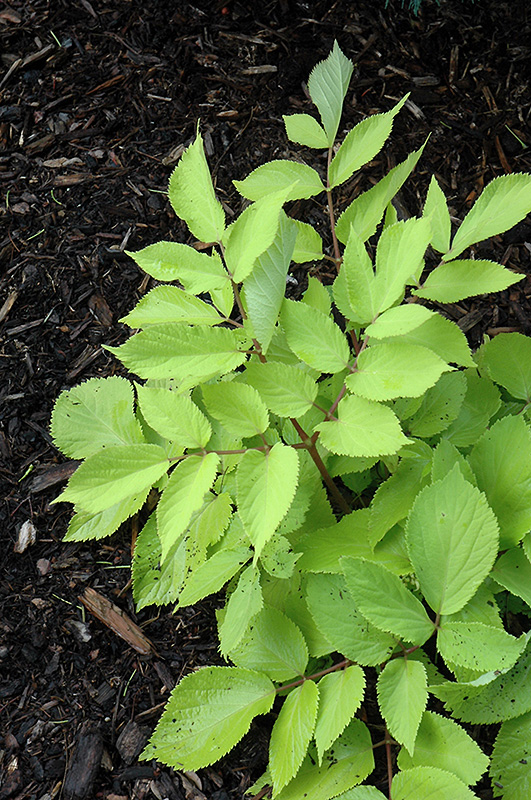VANDERMEER
PLANT LIBRARY
Find the perfect plant for your space by browsing through this extensive selection that we typically carry every year.
This library is for information purposes only.
Sun King Japanese Spikenard
Aralia cordata 'Sun King'
Height: 3 feet
Spread: 3 feet
Sunlight:
![]()
![]()
Hardiness Zone: 3a
Other Names: Golden Japanese Spikenard
Description:
Large golden compound leaves and a rounded, tidy habit makes this a wonderful woodland accent plant; white flower clusters are airy and visually pleasing; foliage is more yellow-gold in bright sun; deep purple-black berries are not edible
Ornamental Features
Sun King Japanese Spikenard features airy racemes of white star-shaped flowers at the ends of the stems from mid to late summer. Its large serrated pointy compound leaves emerge lemon yellow in spring, turning gold in colour throughout the season. It produces deep purple berries .
Landscape Attributes
Sun King Japanese Spikenard is an herbaceous perennial with a ground-hugging habit of growth. Its wonderfully bold, coarse texture can be very effective in a balanced garden composition.
This plant will require occasional maintenance and upkeep, and is best cut back to the ground in late winter before active growth resumes. It has no significant negative characteristics.
Sun King Japanese Spikenard is recommended for the following landscape applications;
- Accent
- Mass Planting
- General Garden Use
Planting & Growing
Sun King Japanese Spikenard will grow to be about 3 feet tall at maturity, with a spread of 3 feet. It tends to be leggy, with a typical clearance of 3 feet from the ground, and should be underplanted with lower-growing perennials. It grows at a medium rate, and under ideal conditions can be expected to live for approximately 20 years. As an herbaceous perennial, this plant will usually die back to the crown each winter, and will regrow from the base each spring. Be careful not to disturb the crown in late winter when it may not be readily seen!
This plant does best in partial shade to shade. It prefers to grow in average to moist conditions, and shouldn't be allowed to dry out. It is not particular as to soil type or pH. It is highly tolerant of urban pollution and will even thrive in inner city environments. Consider applying a thick mulch around the root zone over the growing season to conserve soil moisture. This is a selected variety of a species not originally from North America.







